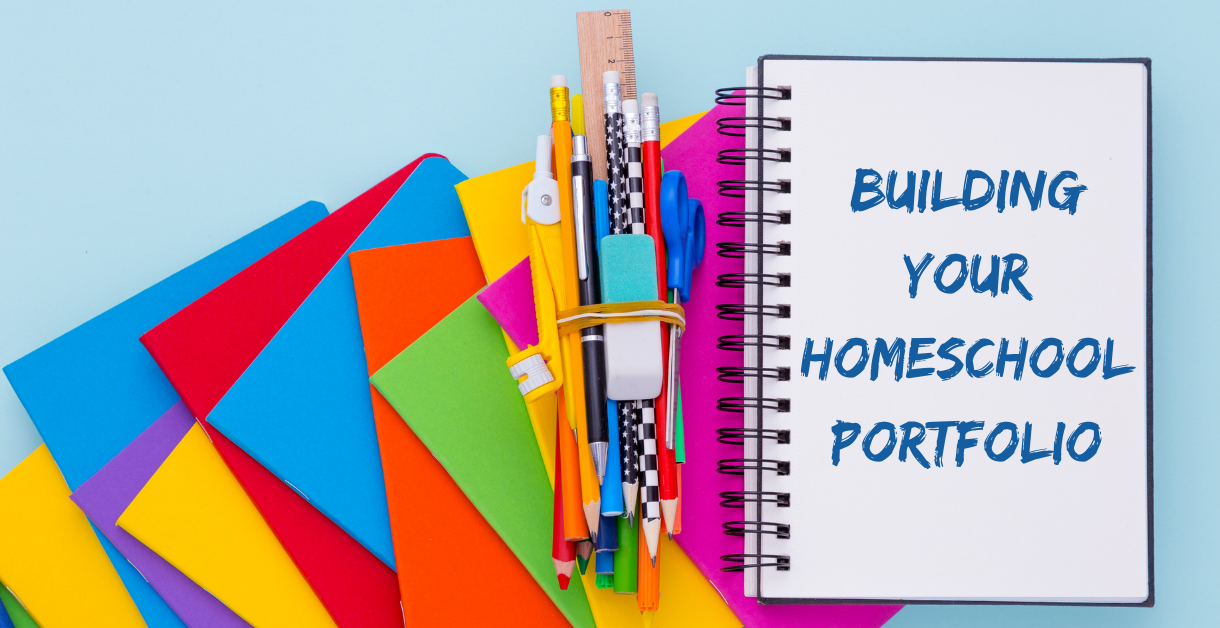Many states require homeschooling families to create a portfolio of their records and their student's work for each year. Even if your state does not mandate that you have to turn one in, it is a great idea to put something together to keep track of everything you have done and create a collection of all the wonderful progress your child has made.
Be sure to check the homeschooling laws and requirements for your area to know exactly what you need to do. You can check the Homeschool Legal Defense Association (HSLDA) for information about the U.S. homeschool laws or on the Homeschool Canada website for Canadian homeschoolers.
So, what exactly do you include in your portfolio? While this is dependent on what your state expects, these are some things that are typically found in a homeschool portfolio with some suggestions for each type:
• Homeschooling legal documents – These could include your letter of intention, enrollment certificates from a charter school or legal association, copies of parents' diplomas (our state requires proof that parents have at least a high school diploma or GED), medical records and other important documents that your state mandates.
• Your homeschool information – Sometimes this information is part of your portfolio cover sheet and may include school year dates, the name of your homeschool (if you have one), address, parent/teacher information and student information including age or grade level of your student.
• Lesson plans – Depending on how you document your lessons, you could more easily provide a syllabus of your subjects or daily schedule that gives a general idea of what you have covered and when.
• Attendance records and/or calendar – It may also be helpful to include a log of the hours spent on each subject. This information could be especially helpful for high school students in determining credits.
• Course information – Can include what courses you covered, descriptions of the courses and your objectives, the table of contents from textbooks used and any credits that will be assigned to the course for your high school student's transcript.
• Assessments and any standardized test results
• Lists – These could be lists of the curriculum used (including publisher information for reference), reading lists, memory work, educational movies/videos used in your classroom, field trip logs and outside achievement recognitions (such as certificates, awards and recognitions for scouts, sports, community service and participation in other activities outside your classroom).
• Progress reports and/or transcripts – Even if you do not do a quarterly progress report, it is beneficial to provide an end-of-year evaluation of your child's educational development. Yearly transcripts will provide an overview of academic achievement and are also quite often required for high school students.
• Examples of your student's work – This is the meat of your portfolio and can sometimes be the most difficult part of putting one together with all the wonderful choices you will have of your student's work. You can select the best of the best of your child's work in each subject, usually 3 or more examples for each, or include some not-so-great examples to help show the progress your child has made. Examples could include tests, worksheets, written work, essays, pictures of projects or anything you deem is noteworthy. You may also wish to add some audio and/or video recordings of your children reading or performing something school related such as making a project presentation or giving a speech. It is also a good idea to choose items from throughout the year to show the student's progress throughout their studies.
On a side note, when going through all your homeschooling papers, you may want to keep a trash bag handy to purge through everything. I say this from experience because I was one of those homeschool moms who kept EVERYTHING even after my children had long been graduated. It was much harder to decide what to keep and what to toss when you are looking at 12 years of schoolwork. ☹
Try not to let the process of gathering the items for your portfolio overwhelm you. Remember that you are trying to represent your child's progress and understanding of the material and that they are ready to move onto the next level of learning.


